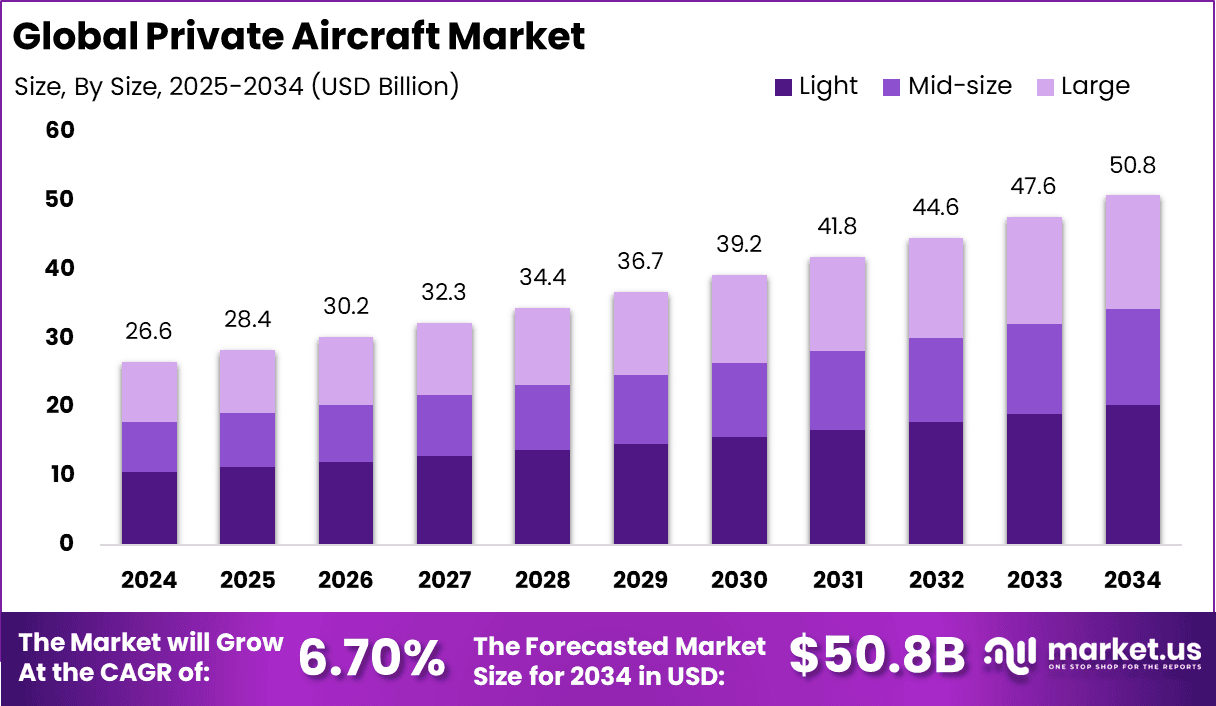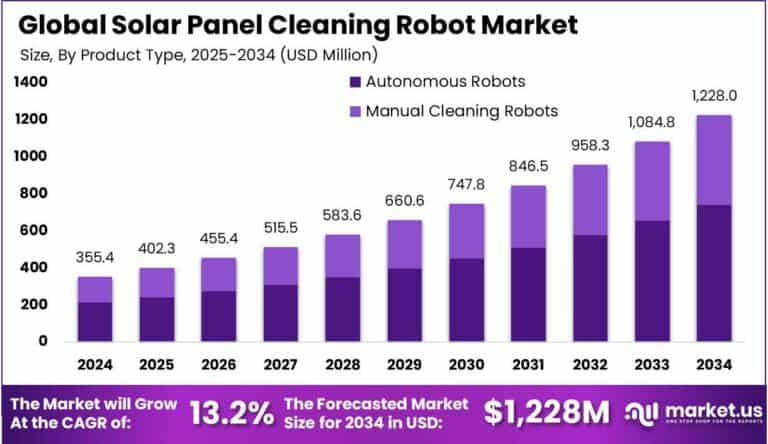Private Aircraft Market size is expected to be worth around USD 80.8 BN

Strong 8k brings an ultra-HD IPTV experience to your living room and your pocket.
The Global Private Aircraft Market size is expected to be worth around USD 80.8 Billion By 2034, from USD 26.6 billion in 2024, growing at a CAGR of 6.7% during the forecast period from 2025 to 2034.
Private aircraft, encompassing business jets, helicopters, and other aircraft types, are used for personalized travel, offering convenience, speed, and privacy. They cater to a niche market of high-net-worth individuals, corporate executives, and entities requiring urgent or confidential travel. This sector is distinguished by its focus on luxury, exclusivity, and high levels of customization.
The Global Private Aircraft Market represents the overall international industry focused on the design, production, sales, and operation of aircraft used for private or business purposes rather than commercial airline service. This market includes a wide spectrum of aircraft types—from light jets and turboprops to heavy jets and long-range business jets—designed to meet the specific travel needs of high-net-worth individuals, corporate executives, and government officials. Over the past few years, this sector has seen steady growth, driven by increasing wealth accumulation, rising time sensitivity among professionals, and a demand for convenience, flexibility, and privacy in travel.
The Private Aircraft Market refers specifically to aircraft purchased and operated for personal or corporate use within various global regions. It includes both brand-new and pre-owned aircraft and is heavily influenced by regional economic dynamics, infrastructure availability, and service ecosystems. Key markets such as North America, Europe, and the Middle East dominate this segment, but Asia-Pacific is quickly emerging due to rising wealth and business expansions. The market also benefits from a growing interest in fractional ownership and private charter services, which make private aviation more accessible.
One of the top driving factors behind the market’s growth is the increasing demand for time-efficient, secure, and personalized travel options. As commercial air travel becomes more congested and subject to delays, private aircraft provide an attractive alternative. Demand analysis shows that more business travelers and high-income individuals are choosing to invest in private aviation for its unmatched flexibility and productivity benefits.
Technological adoption is accelerating, with new-generation aircraft integrating advanced avionics, lighter composite materials, and more fuel-efficient engines. These innovations not only improve performance and safety but also reduce operational costs, making ownership more appealing. Furthermore, digital platforms are making it easier to book, manage, and even co-own aircraft, attracting a younger demographic of tech-savvy users.
Key reasons for this adoption include reduced airport wait times, direct-to-destination flights, and increased data security for corporate travelers. The ability to avoid long layovers, customize flight schedules, and maintain complete privacy has made private aviation a compelling choice for C-level executives and entrepreneurs alike.
Investment opportunities in this space are growing rapidly. From aircraft manufacturing to maintenance, fleet management, and aviation services, there is a surge in venture capital and private equity interest. Infrastructure development—such as Fixed Base Operators (FBOs) and hangar services—is also drawing significant investment, especially in developing markets where demand is on the rise.
Business benefits are substantial. Companies using private aviation report better employee productivity, quicker decision-making, and stronger client relationships due to increased mobility. Moreover, private jets offer a controlled environment that enhances comfort and supports business continuity even during transit.
Technological advancements have truly redefined the market. From AI-driven flight planning systems to hybrid-electric propulsion models, innovation is pushing the boundaries of efficiency and sustainability. Manufacturers are also exploring autonomous systems and advanced connectivity options, which are set to transform both the ownership and piloting experience in the coming decade.
The regulatory environment remains a crucial factor shaping market dynamics. Aviation authorities across regions are working to modernize regulations around safety, emissions, and pilot training. While these frameworks vary by country, global efforts to streamline private aircraft operations and reduce carbon footprints are fostering international alignment.
Note: IndiBlogHub features both user-submitted and editorial content. We do not verify third-party contributions. Read our Disclaimer and Privacy Policyfor details.







